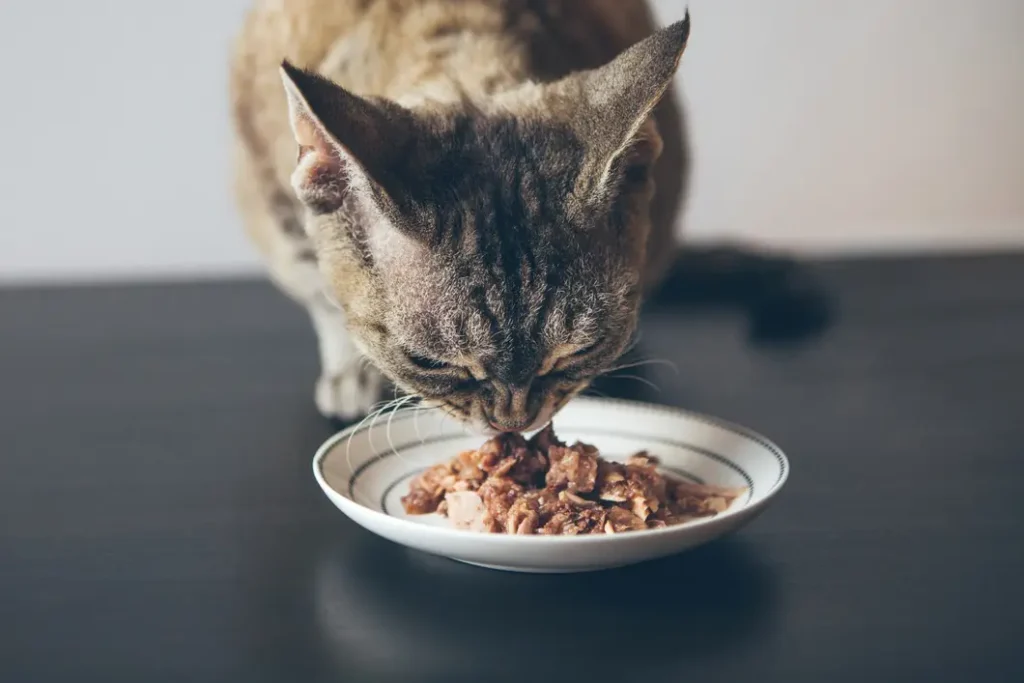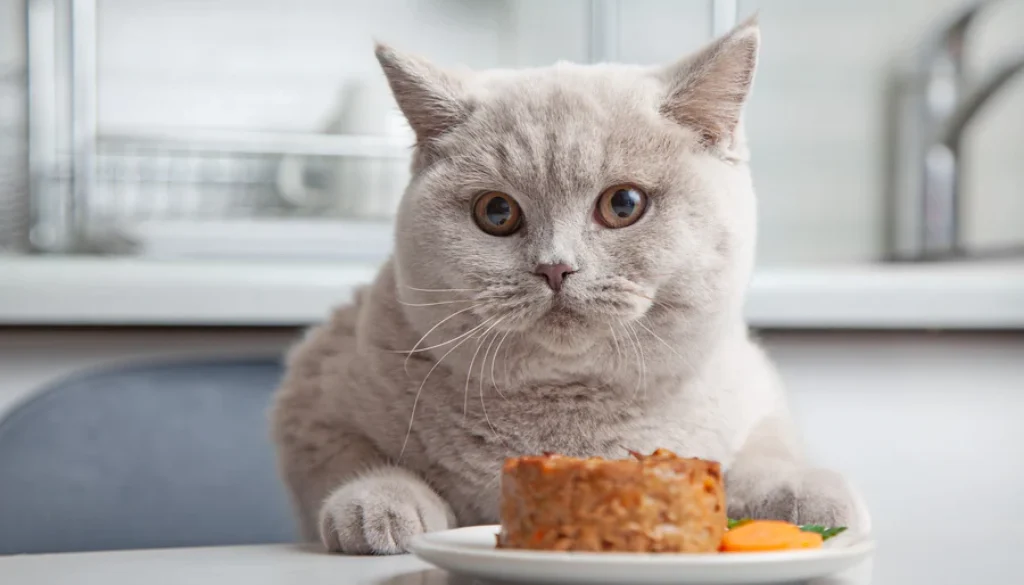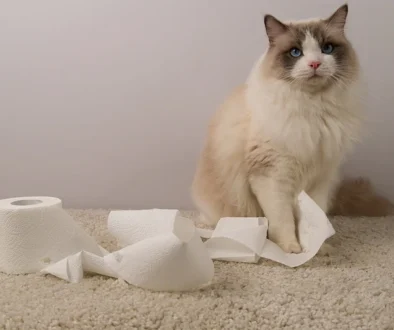Best Wet Cat Foods Australia 2025
Wet cat food remains one of the best wet cat foods options for Australian pet parents and for good reason.
Its soft texture, high moisture content, and rich, meaty aroma make it far more enticing than dry kibble, especially for fussy eaters, senior cats, and growing kittens. The extra hydration it provides is also vital for urinary health, which is important for cats that naturally tend to drink very little.
Feeding challenges like digestive issues, poor appetite, or needing to hide medication can make mealtimes stressful. Wet food can be a helpful solution in all these situations. In my veterinary clinic, I often recommend it to support hydration, stimulate appetite in picky eaters, and make feeding easier for cats with dental problems or recovering from illness. Most cats seem to enjoy chunk-style textures in gravy, and gently warming the food can bring out its aroma to tempt even reluctant eaters.
This guide is different. It’s grounded in real veterinary insight shaped by hands-on experience, research, and sound clinical judgement. Whether you’re feeding a kitten, managing a health condition, or simply trying to find a food your cat will consistently enjoy, we’ve carefully selected the best wet cat food options for 2025 to help you make the right choice.
Table of Content
- Benefits of Wet Foods
- Best Wet Cat Foods in Australia 2025: Vet‑Recommended
- Best Overall Option: Hill’s Science Diet Adult Tender Chicken Dinner Wet Cat Food
- Best Grain-Free Option (Available Through Vets): Delicate Care Grain-Free Wet Cat Food (Skin or Stomach)
- Best High Protein Option: Purina Pro Plan Chicken & Rice Entree in Gravy Adult Cat Wet Food
- Best Budget-Friendly Option: Advance Adult Chicken Delight Wet Cat Food
- Best for Kittens: Hill’s Science Diet Kitten Wet Cat Food
- Best for Senior Cats: Royal Canin Aging 12+ Canned Cat Food
- Best for Sensitive Stomachs: Hill’s Prescription Diet Gastrointestinal Biome Adult Cat Wet Food
- Best for Fussy Eaters: Hill’s Prescription Diet a/d Urgent Care Wet Cat Food
- Best Overall Option: Hill’s Science Diet Adult Tender Chicken Dinner Wet Cat Food
- Wet Food Types Explained
- How to Choose the Right Wet Food for Your Cat
- Wet Food Feeding Tips
- FAQs About Wet Cat Foods
- Conclusion
Benefits of Wet Foods
For years, dry kibble was the go-to for many cat owners, largely due to its convenience. But wet cat food has grown in popularity and for good reason. It more closely resembles the natural diet cats were meant to eat: high in protein, rich in moisture, and easy to digest.
One of the biggest benefits is hydration. Since cats naturally have a low thirst drive, wet food which can be made up of around 80% water helps support kidney function and urinary tract health. It’s also more appealing to most cats, thanks to its taste and texture, which can be especially helpful for older cats or those feeling unwell. The soft, digestible consistency makes it a gentle option for sensitive stomachs, kittens, seniors, or cats recovering from illness.
By choosing one of the best wet cat foods options in Australia, you’re doing more than just pleasing your cat you’re actively supporting their long-term health and wellbeing.
Best Wet Cat Foods in Australia 2025: Vet‑Recommended
Here are our top picks across various categories to help you find the perfect fit for your feline:
Best Overall Option: Hill’s Science Diet Adult Tender Chicken Dinner Wet Cat Food
Specifically designed for adult cats, Hill’s Science Diet Tender Chicken Dinner features premium-quality chicken combined with carefully balanced nutrients. This formula helps maintain lean muscle and includes essential antioxidants and vitamins to support your cat’s overall health and vitality.
Why Dr. Jane Recommends Hill’s Science Diet Food:
“Hill’s Science Diet is a go-to for everyday feeding — balanced, reliable, and highly palatable. The tender texture and savoury flavour appeal to most cats, even the fussy ones.”
Best Grain-Free Option (Available Through Vets): Delicate Care Grain-Free Wet Cat Food (Skin or Stomach)
Delicate Care offers a grain-free wet food made in Australia, tailored for cats with sensitive stomachs or skin issues. Using novel proteins and gentle, allergy-friendly ingredients, it’s crafted to aid digestion and promote healthy skin—without including common triggers like grains.
Why Dr. Jane Recommends Delicate Care Food:
“This formula is perfect for cats needing a hypoallergenic, gentle diet. It’s scientifically formulated and particularly helpful for those with food intolerances or itchy skin.”

Best High Protein Option: Purina Pro Plan Chicken & Rice Entree in Gravy Adult Cat Wet Food
This protein-rich formula features quality chicken as the main ingredient, paired with rice to provide a steady source of energy. Purina Pro Plan’s Chicken & Rice Entree in Gravy is designed to help maintain lean muscle while being gentle on the digestive system. Its tasty gravy texture is a consistent favorite with cats.
Why Dr. Jane Recommends This Food:
“Purina Pro Plan is a strong option when you’re looking for high protein and broad appeal. It’s nutritious, well-balanced, and very well accepted especially the gravy-based textures.”
Best Budget-Friendly Option: Advance Adult Chicken Delight Wet Cat Food
Advance offers a cost-effective solution without compromising on nutritional quality. The Adult Chicken Delight variety includes real chicken along with tailored vitamins and nutrients to promote a healthy immune system and good digestion ideal for everyday feeding.
Best for Kittens: Hill’s Science Diet Kitten Wet Cat Food
Specially made for kittens under one year, this Hill’s Science Diet formula supports key developmental needs like brain growth, bone strength, and immune health. Its soft texture and high palatability make it an easy choice for young kittens with small mouths.
Why Dr. Jane Recommends This Food:
“Hill’s kitten food is perfectly balanced for growth high in energy, DHA, and protein. It’s one of the best starts you can give a growing kitten.”
Best for Senior Cats: Royal Canin Aging 12+ Canned Cat Food
Created for cats aged 12 and older, Royal Canin Aging 12+ helps maintain joint mobility, kidney health, and appetite. The soft, easy-to-eat texture and enhanced taste profile make it a smart pick for older cats with reduced appetite or dental concerns.
Best for Sensitive Stomachs: Hill’s Prescription Diet Gastrointestinal Biome Adult Cat Wet Food
This veterinary diet is formulated to aid digestive health using Hill’s ActivBiome+ prebiotic technology. It’s designed to promote regular bowel movements and support a balanced gut microbiome ideal for cats experiencing chronic or occasional digestive issues.
Best for Fussy Eaters: Hill’s Prescription Diet a/d Urgent Care Wet Cat Food
Developed for cats in recovery or requiring critical care, this formula is energy-dense, smooth in texture, and extremely appetising. It can be easily warmed or syringe-fed, making it ideal for very picky or unwell cats who aren’t eating on their own.
If you have a fussy can, you can read this guide: What to Feed a Fussy Cat?
Wet Food Types Explained
When it comes to wet cat food, texture matters just as much as taste. Cats can be surprisingly particular about how their food feels in their mouth, so understanding the different types available can help you choose one your feline will actually enjoy.
- Chunks in gravy or jelly: These are small meaty pieces served in a savory sauce or gelatin. They’re a hit with cats who love to lick up the flavorful liquid before chewing on tender morsels. This style often stimulates appetite and is a favorite among adult cats.
- Pâté or loaf style: Smooth and uniform in texture, pâté is easy to scoop and perfect for cats that prefer a softer meal. It’s especially ideal for older cats or those with dental issues, as it requires minimal chewing.
- Mousse: This ultra-light, airy texture is even softer than pâté. It’s gentle on tiny mouths, making it great for young kittens, very senior cats, or finicky eaters who may be put off by denser foods.
Each cat has their own preferences, so a bit of trial and error is normal. If your cat seems disinterested in a particular food, try gently warming it this can release more aroma and make the meal more inviting.
How to Choose the Right Wet Food for Your Cat
Every cat is unique, and the best wet cat foods for one might not suit another. Here’s what to consider:
- Life stage: Kittens need more calories and specific nutrients for growth. Seniors may need lower phosphorus and softer textures.
- Health concerns: Look for formulas addressing urinary, kidney, skin, or digestive health.
- Palatability: Cats often have strong texture or flavour preferences.
- Budget: Premium doesn’t always mean better but the cheapest often compromise on quality.
Tip:
Always transition to a new food gradually over 7–10 days to avoid stomach upset.
Wet Food Feeding Tips
Planning to switch your cat to a new wet food? A gradual transition is key to avoiding digestive upset and helping your cat adjust to the new taste and texture.
- Start slow: Begin by mixing 25% of the new wet food with 75% of your cat’s current food.
- Increase gradually: Over the course of 7–10 days, slowly adjust the ratio — moving to 50/50, then 75/25, until your cat is fully on the new diet.
- Watch closely: During this period, monitor your cat’s appetite, energy levels, and stool consistency. Mild changes are normal, but if you notice vomiting, diarrhea, or a complete loss of appetite, slow down the transition or consult your vet.
Keep unopened cans or pouches in a cool, dry spot away from direct sunlight. Once opened, cover the food (a can lid or wrap works well) and refrigerate. Be sure to use it within 48 hours to maintain freshness and prevent spoilage. You can gently warm refrigerated food to enhance aroma, just ensure it’s not too hot before serving.
Many cat owners choose to feed a combination of wet and dry food. This mixed approach provides the hydration and rich flavor of wet food along with the crunch and potential dental benefits of kibble. Just be sure to balance portions to avoid overfeeding.
FAQs About Wet Cat Foods
What Wet Cat Food Do Vets Recommend?
Veterinarians frequently recommend trusted brands like Hill’s, Royal Canin, Advance, Purina Pro Plan, and Delicate Care. These brands are known for their science-backed formulations, balanced nutrition, and consistent results in clinical use, making them reliable choices for everyday feeding and specific health needs.
Wet or Dry Cat Food: Which Is Better?
Each has its own advantages. Wet food helps keep cats hydrated, is typically more appealing in taste and texture, and is easier for cats with kidney issues or dental problems to eat. On the other hand, dry food is convenient to store, calorie-dense, and can support dental health through chewing. Many vets advocate for a mixed feeding routine to offer the benefits of both.
What Is the Best Wet Cat Food for Sensitive Stomachs?
For cats with digestive issues, Hill’s Prescription Diet Gastrointestinal Biome is one of the most recommended options. It includes specialized prebiotic fiber to promote gut health and is specifically designed to help manage and stabilize digestive upset.
What Is the Best Wet Food for Kittens?
Top choices for kittens include Hill’s Science Diet Kitten Wet Food and Royal Canin Mother & Babycat. Both are formulated to meet the nutritional needs of growing kittens, offering high-quality protein, essential fats, and DHA to support brain development and overall growth.
Can Wet Food Help Keep My Cat Hydrated?
Yes, it can. Since many cats don’t drink enough water on their own, wet food provides a valuable source of moisture. It’s especially beneficial for urinary health and kidney function. Pairing wet food with a water fountain can further encourage hydration and support your cat’s overall wellbeing.
Is grain‑free wet food better for my cat?
Not necessarily. Grain‑free is helpful for cats with allergies, but many cats do just fine on formulas containing rice or barley.
Does wet food help with dental health?
Wet food doesn’t clean teeth the way dry kibble might, so regular brushing and vet checkups are still important.
Can wet food reduce hairballs?
Yes — the higher moisture and digestibility can improve coat health and reduce hairball formation.
How often should my cat eat wet food?
This depends on their age, health, and diet. Many vets recommend at least one wet meal a day alongside dry kibble.
Conclusion
Choosing the right wet cat food can have a real impact on your cat’s health, hydration, and overall quality of life.
Whether you’re caring for a kitten, managing a sensitive tummy, or trying to tempt a fussy senior to eat, the best wet foods combine quality ingredients, veterinary expertise, and proven nutritional benefits. Trusted brands like Hill’s, Royal Canin, Advance, Purina Pro Plan, and Delicate Care continue to deliver science-based formulas that support cats at every stage of life.
This best wet cat foods guide is based on hands-on veterinary experience not just what’s printed on the label. By focusing on options that are complete, balanced, and tailored to your cat’s individual needs, you’re helping them enjoy tastier meals and healthier days.
If you’re changing your cat’s diet or dealing with a medical issue, it’s always best to check in with your vet. And remember, even a small switch like offering a more appealing wet food can make a big difference in your cat’s wellbeing.




